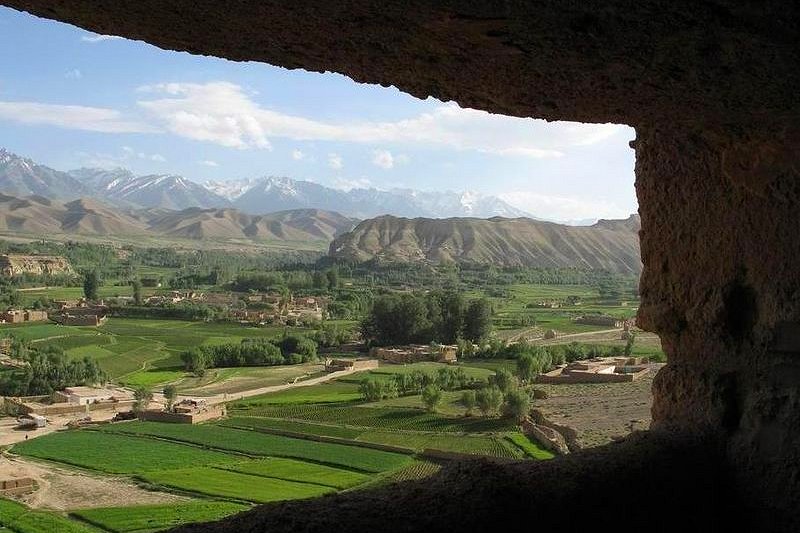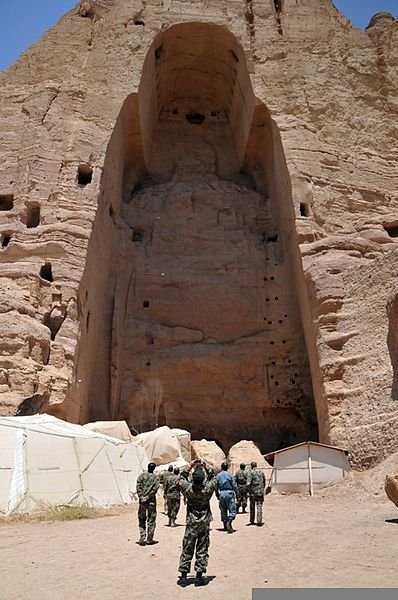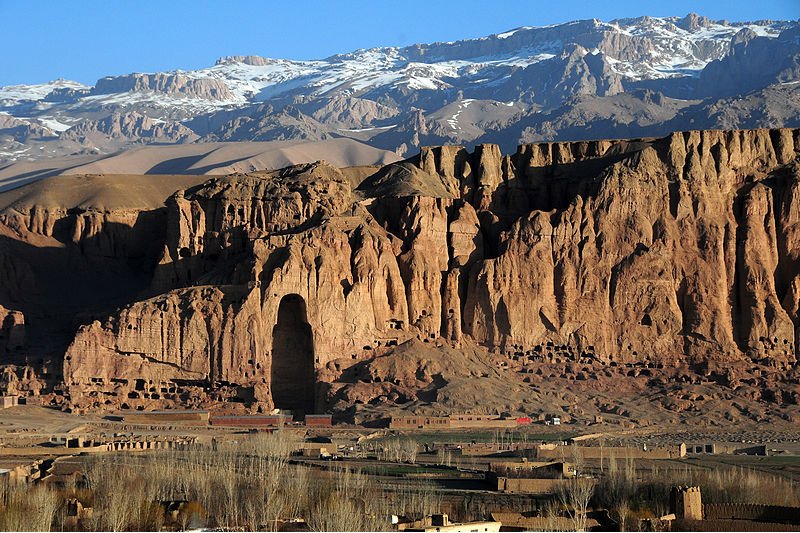 View of Bamiyan Valley, Afghanistan
View of Bamiyan Valley, AfghanistanSource: https://commons.wikimedia.org/wiki/File:BamyanRectanglular.jpg
Author: Sqamarabbas

Author: Sqamarabbas

The Bamiyan Valley is a World Heritage Site in Afghanistan. It was inscribed in 2003. The valley is located in Bamyan Province which is also spelled Bamiyan, in central Afghanistan. The heritage site at Bamiyan Valley comprises a 158.9265 hectare core zone and a 341.95 hectare buffer zone.
What to See in Bamiyan Valley
The Bamiyan Valley is famous for its ancient Buddhist remains such as monasteries, cave art and particularly gigantic Buddhist statues. Two of the biggest Buddhist statues in Bamiyan Valley, measuring 55 meters and 37 meters respectively, were deliberately destroyed by the Taleban in 2001. They were the largest standing Buddha statues in the world. Their destruction shocked the world and brought much exposure and attention to Bamiyan Valley. In addition to the ancient Buddhist remains, Bamiyan Vally also holds remains of forts dating from various Islamic periods. Visitors to Bamyan Province should visit Bande Amir, a place with five picturesque lakes and gorgeous landscape. Remains of the Bamiyan Buddha cavern
Remains of the Bamiyan Buddha cavernSource: https://commons.wikimedia.org/wiki/File:Afghan_security_force_members_approach_the_site_of_the_larger_of_two_historic_Buddhas_in_Bamiyan_province,
_Afghanistan,_July_4,_2011_110704-A-UK761-206.jpg
Author: Capt Kenneth Stewart

_Afghanistan,_July_4,_2011_110704-A-UK761-206.jpg
Author: Capt Kenneth Stewart

Location of Bamiyan Valley
Bamiyan Valley is located in Bamyan Province, whose capital is also called Bamyan. During ancient times, this area was part of the Silk Road. As a result, it received influences from Greek, Persian and Buddhist art to produce a unique art style known as Greco-Buddhist art.How does Bamiyan Valley get its name
The name Bamiyan, also written Bamyan and Bamian, is derived from the Sanskrit word varmayana, which means "coloured". It is in central Afghanistan. Panoramic view of Bamiyan Valley
Panoramic view of Bamiyan ValleySource: https://commons.wikimedia.org/wiki/File:Sunrise_of_Bamyan_Valley.jpg
Author: Afghanistan Matters

Author: Afghanistan Matters

Threats & Issues faced by Bamiyan Valley
The political volatility of Afghanistan required the World Monuments Fund to place the Buddhist remains of Bamiyan Valley on the 2008 World Monument Watch List, as one of the 100 Most Endangered Sites of the World.Bamiyan Valley World Heritage Site Inscription Details
Location: N34 50 48.984 E67 49 30.9Inscription Year: 2003
Type of Site: Cultural
Inscription Criteria: I, II, III, IV, VI
List of World Heritage Sites in Afghanistan
 Latest updates on Penang Travel Tips
Latest updates on Penang Travel Tips
 Map of Roads in Penang
Map of Roads in Penang
Looking for information on Penang? Use this Map of Roads in Penang to zoom in on information about Penang, brought to you road by road.
Copyright © 2003-2025 Timothy Tye. All Rights Reserved.

 Go Back
Go Back